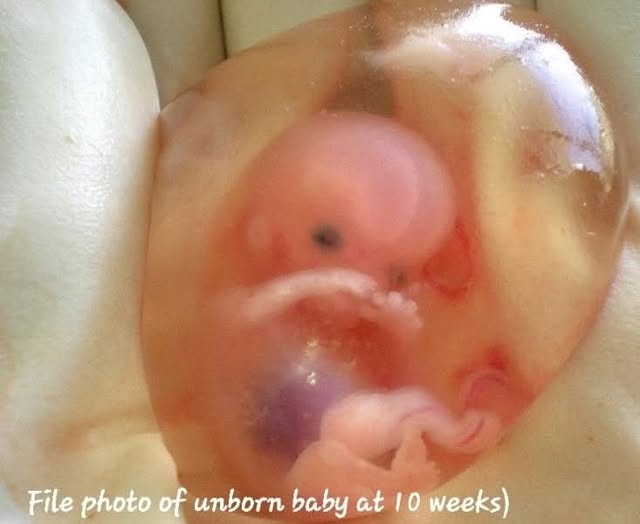Week ten marks the end of the embryonic period. The embryo has grown from a single cell into nearly one billion cells that form over 4,000 distinct anatomic structures.4 The adult has about 4,500 named body parts, so this means that over 90% of these structures first appear during the embryonic period.5
The embryo can now bend his elbows and bring his hands together. The embryo can also roll over within the amniotic sac, squint, grasp and point his toes.6 When the embryo touches his face, he will frequently move his head away.7 The embryo even makes intermittent breathing motions.8
The front and back of the eyeball fuse together. At this point, the eye has a lens, cornea, and retina.9 The retina will continue growing and maturing for the rest of the pregnancy, and visual acuity continues improving for the first four years of childhood.10
In week 10, the digestive system and kidneys start working. The stomach and pancreas start making most of the digestive enzymes.11 Interestingly, there is not enough space in the fetal abdomen for the entire intestine, so a few of the loops of intestine remain just under the umbilical cord until 12 weeks.12 The kidneys start to filter toxins out of the blood stream. The embryo starts to produce urine and pee into the amniotic fluid.13 After an adult swallows food, contractions in his esophagus and intestines help propel the food forward in a process called peristalsis. Peristalsis begins in the embryo’s large intestine in the week 10 and continues for the rest of his life.14
This week, males develop testes. The testes start producing testosterone, and another hormone called anti- Mullerian hormone. These hormones help develop the rest of the male genitalia. Without these two hormones, the embryo would develop female genitalia, even if the embryo had a Y-chromosome and was genetically male.15
Up until this point, the embryo’s internal organs were easily viewed through the thin skin. Around ten weeks, the skin develops a second layer of cells, hiding the internal organs but leaving most blood vessels visible.16


